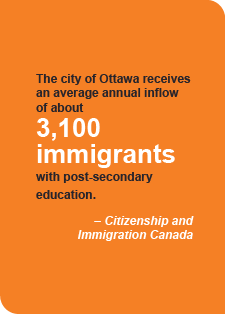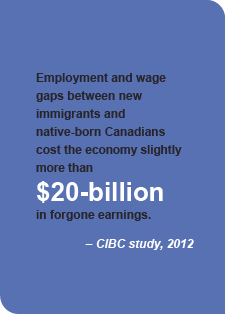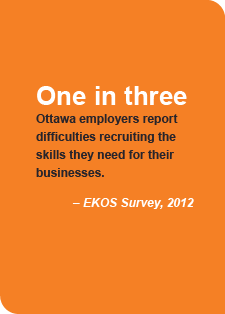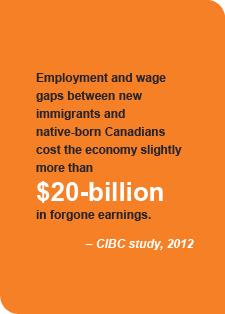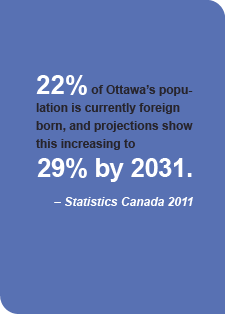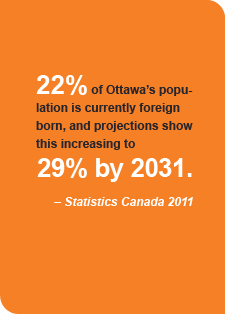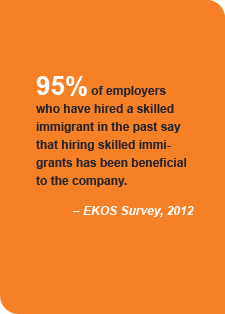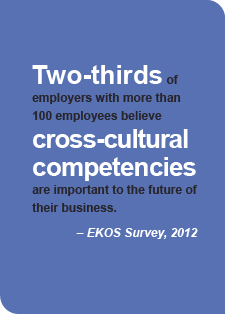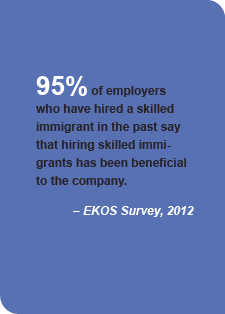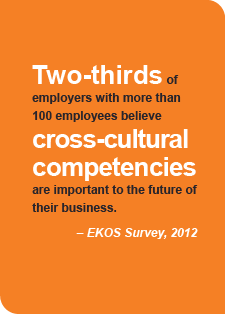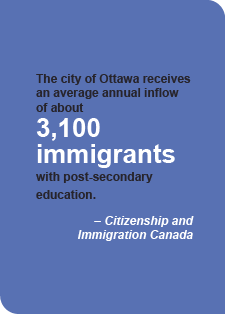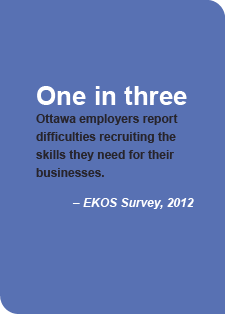Creating a Culture of Inclusion in the Workplace
How individual practices of inclusion can bring diversity and inclusion policies to life.
Recognizing the benefits of diversity and inclusion, many employers and organizations have taken significant steps to build inclusive strategies and policies in their workplaces. This work is important. It articulates a vision for diversity and inclusion, and outlines strategies and structural changes to get there.
 However, the best-intended strategies and policies do not always result in meaningful inclusion within the workplace because the culture of the organization is not in alignment with the policies.
However, the best-intended strategies and policies do not always result in meaningful inclusion within the workplace because the culture of the organization is not in alignment with the policies.
The result is that many people within an organization, such as immigrants, may not feel welcomed and may see diversity initiatives as having little real effect. This can impact engagement, performance, team dynamics and retention. It may stifle the many well-known benefits organizations can achieve from having and harnessing diversity in the workplace.
The unwritten rules.
Culture is a set of beliefs, values, shared understanding and behaviours. Within every organization, there is a dominant culture with unwritten rules. In order to access employment opportunities and advance in a workplace, you need to know and understand the culture – for example, what is and isn’t acceptable behaviour. An organization’s diversity strategy and policy efforts will ultimately be unsustainable if the organizational culture does not evolve to be more inclusive for diversity.
The grounding of diversity work is in culture.
Inclusion is about inviting people to come together, feel a sense of belonging, and meaningfully contribute. Within the workplace, this is about creating an organizational culture of inclusion. Creating an inclusive culture can be messy, challenging and invigorating – and it is an ongoing, evolving journey and commitment.
What can you do to foster a culture of inclusion in your organization?
As individuals, regardless of your role in your organization, you influence the organizational culture. You can also model and promote inclusion. Here are some tips to help you along the way.
(1) Do your homework first. Be willing to do some preliminary work before engaging in conversations related to diversity, inclusion and people’s lived-experiences. For example, read articles or books; view videos or films; attend a lecture or reading, or seek to attend networking and other events with diverse communities to introduce yourself to new cultures, including those of your colleagues, staff members or clients. Engaging in conversations related to diversity and inclusion can be very personal and coming to this with some background knowledge help you build confidence and engage meaningfully. This also show you are genuinely interested in creating an inclusive workplace culture.
(2) Think about power and privilege. What rights, benefits and advantages do you enjoy and how might these differ from other individuals. Are you part of a dominant group that experiences advantages? How so? What systems are in place that provide opportunities for some, and create barriers for others? Does this play-out in your workplace? With a greater awareness and recognition of the ways in which privilege operates, you can now take responsibility to actively create opportunities for greater equity. Be mindful that we all have multiple social identities (e.g., race, class, gender) and these identities intersect. Trying to understand how power and privilege operate through a lens that sees our many identities (including the invisible attributes like values), can provide insight into how multiple systems of oppression interrelate and how we can effectively work towards greater equity.
(3) Build trust. Being able to locate yourself and acknowledge your experiences is a helpful starting point to engaging in authentic conversations within a diverse workforce. This can help open up a conversation and avoid assumptions. For example, “I grew up in Ottawa, or my family is Jamaican, what about you?” Or, you may use the Diversity Bingo exercise at one of your staff meetings or retreats to show your team that you are in the conversation.
(4) Check your assumptions and listen to understand. We often make quick judgments and conclusions about people without facts or evidence. Sometimes, we are not conscious that our listening is filtered through judgments and evaluations. Our assumptions can impact how we react to information presented. Challenge yourself to listen actively, notice assumptions or judgments and reframe.
(5) Be authentic with your invitation for engagement. Conscious or unconscious inauthenticity can stop a conversation before it starts. Be willing to show your humanity by sharing your doubts and fears in having the conversation. For example, “I don’t know much about the situation in your country. If you are willing to share now, or, at another time, I would be very interested in learning about your family’s or your own experience.” Do not be offended if a person says no. This could be for many reasons. Be open that the person may be willing to have the conversation at a future date, or consider asking another person or doing additional research to gather more information.
(6) Apply an equity lens to your day-to-day work. Acting in an equitable way means considering measures to accommodate differences and the disadvantages people face in order to create fairness and inclusion. Whether you are planning a staff function or developing a new organizational policy, assess the different ways this work could impact people. Think about what you could do to make your programs and activities work for everyone. When you are not sure, ask.
(7) Be in it for the long term. Recognize that being a part of creating a culture of inclusion and fostering cross-cultural relationships is an on-going learning process that at times requires moment to moment inquiry and reflection. You will make mistakes along the way, but building trust and creating change requires long-term sustained commitment. Make it known through day-to-day actions, humility and reflection that you intend to grow, learn and support an inclusive workplace culture.

